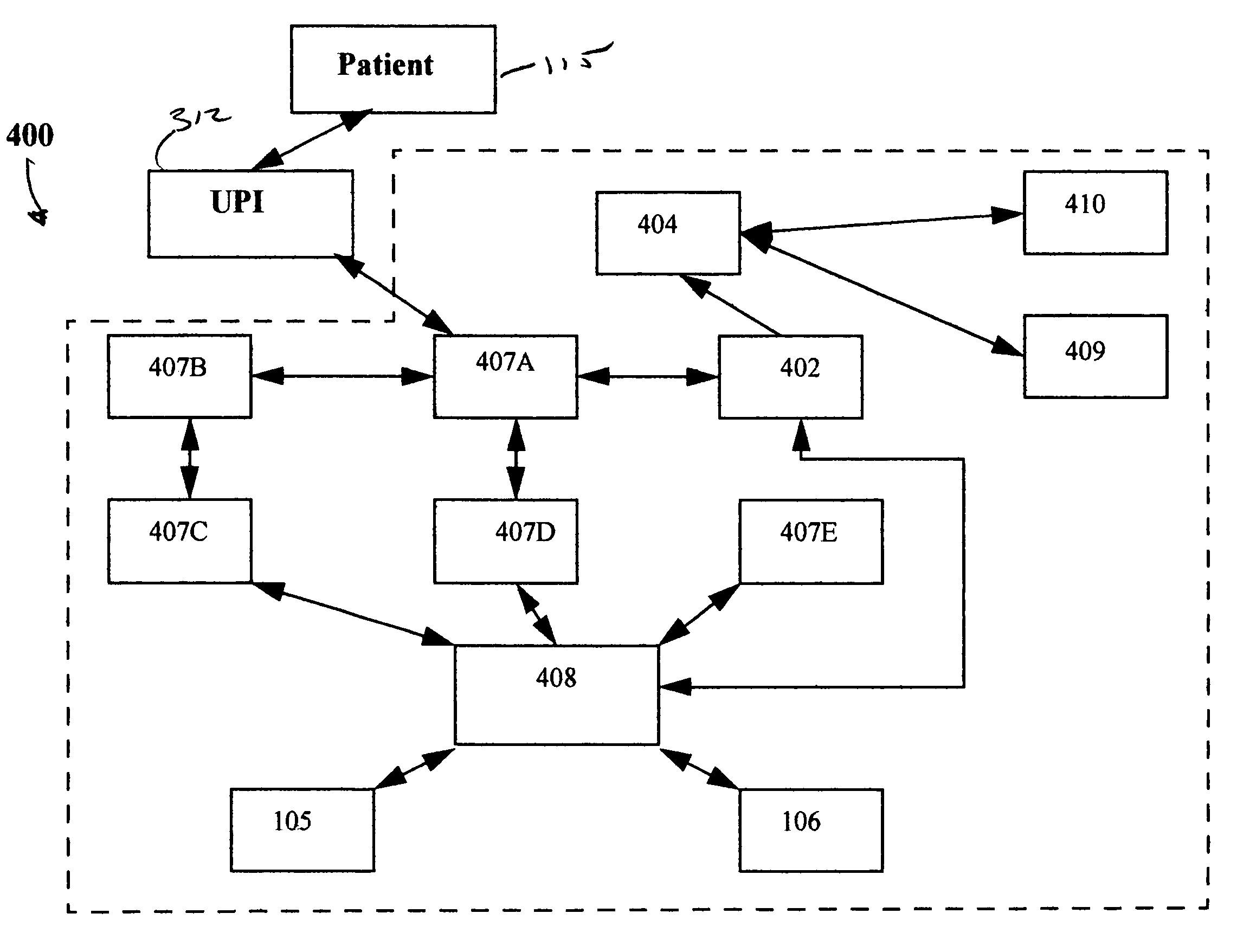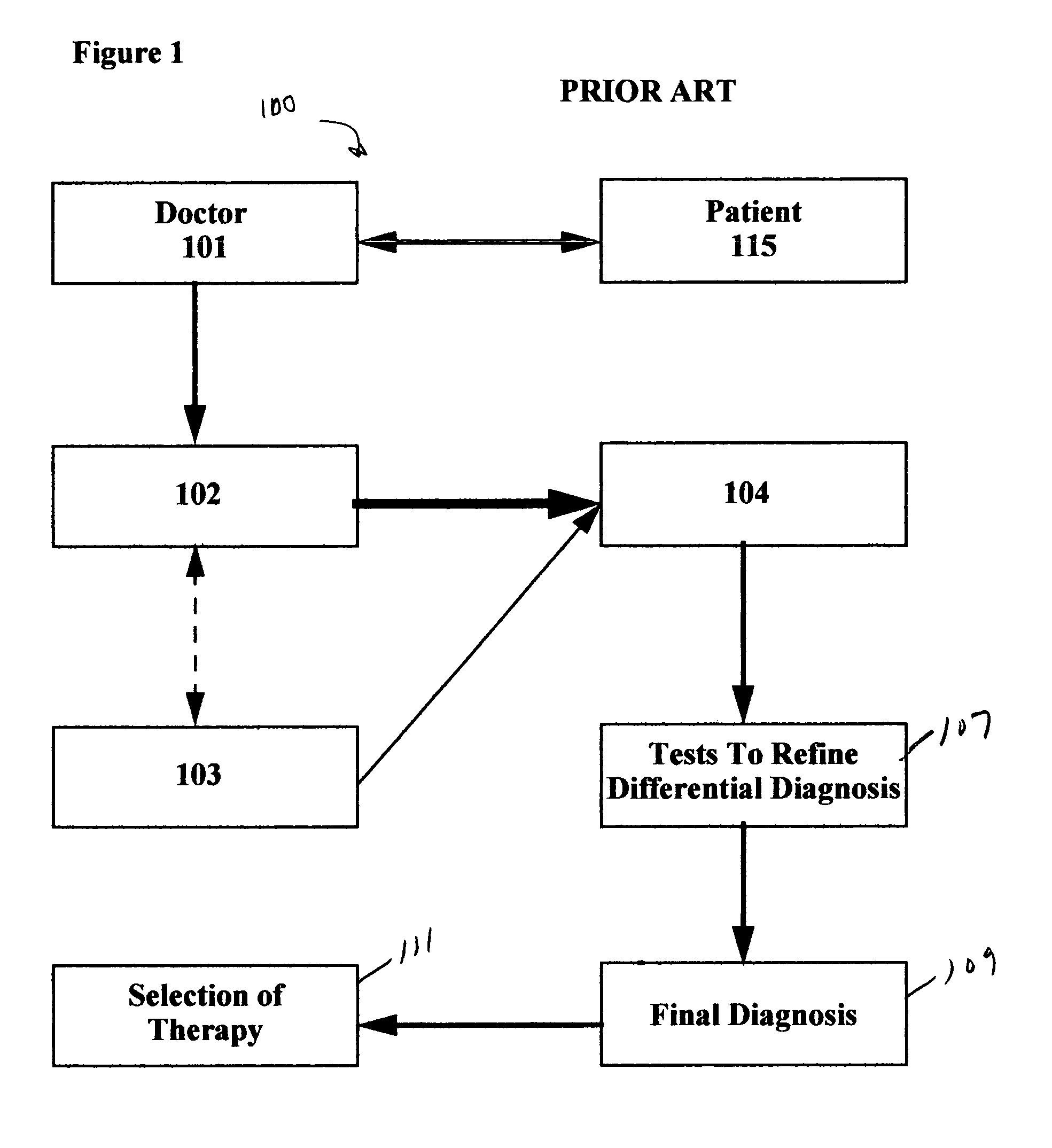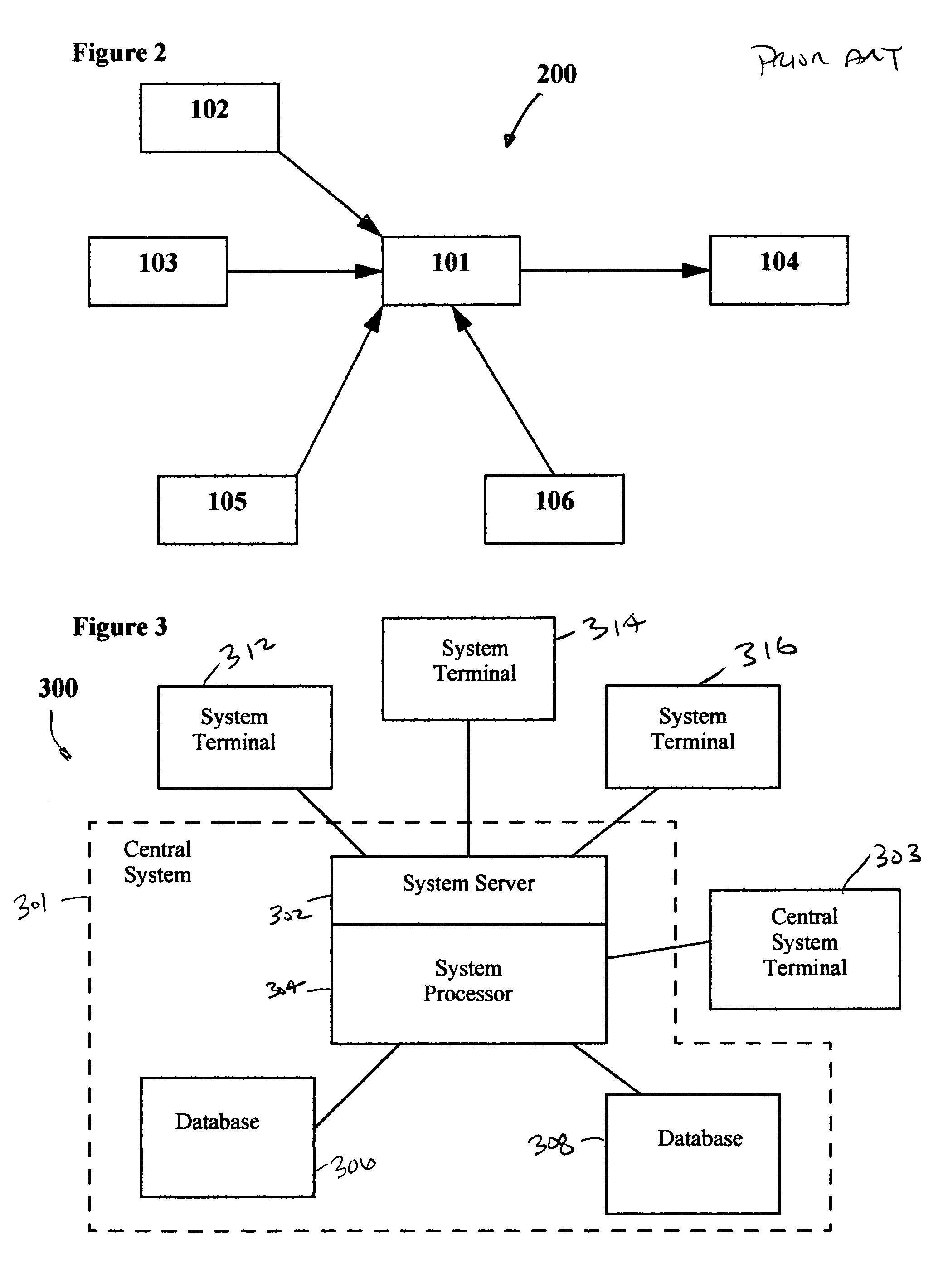However, attempts to access specific, desired information usually results in an unstructured “data dump” that is typically not responsive to these specific or specialized needs of the physician or health care professional.
When this is done, it will overcome the endemic problems in the system which have been the widely acknowledged to include: high and escalating costs of health care in the United States and worldwide and lack of a
uniform quality of care in all areas where health care is administered.
There also are serious problems in the ability of the health care system to address emerging issues in health care in more than a purely localized way.
This, among other things, results in an
erosion in the physician-patient relationship.
This approach is unfortunate and dangerous given that the “patient
medical history” is the single most important event of the physician-patient interaction.
Since physicians are best suited to understand a patient's medical history and other medically relevant facts, these
alternative methods have not been, and continues not to be, implemented because they would be administered by lay people, not physicians.
The present health care system lacks the ability to keep physicians up-to-date with respect to the latest developments in
medical science.
This wealth of new and innovative diagnosis and treatment procedures, along with the wealth of existing knowledge, however, create of formidable challenge for physicians if they attempt to master it.
This is particularly true since the formal period of
medical education, i.e.,
medical school,
internship, and residency training, is decreasing and a large number of practicing physicians do not have ready access to the information.
The present health care system, however, charges ahead without a solution to these problems believing that physicians with less training and expertise will still be able to provide high quality care.
There are serious problems in physicians availing themselves of this new information in a manner in which they can immediately
impact the care of their patients.
Because of this problem, there is a widening gap between the knowledge physicians possess and the information that is actually available.
This is because the physician does not know the most current or even the complete methods for the accurate diagnosis and treatment of the patient's conditions.
This reflects the physician's lack of experience and his / her lack of continuing
educational training in managing diseases.
This difficulty in keeping practicing physicians fully informed is becoming more acute with each passing day because of their inability to know of and prescribe new drugs or understand how to use new procedures.
Current methods for CME are abstract and usually not relevant to the specific, immediate needs physicians have in caring for their specific patients.
CME, as it is administered now, requires large amounts of physician time outside of the clinically productive environment in which physicians work.
Moreover, it is expensive.
Today's CME programs are narrow in scope and focus, and ineffective in addressing the knowledge gap.
Even when CME is considered effective, it does not solve a physician's almost impossible task of recalling selective pieces of information he or she receives.
As such, it is not readily available for diagnosis and treatment of a diverse array of patients.
Another problem with the current state of the health care system is the in which medical records are kept and transferred from physician to physician (when needed).
This problem made it next to impossible to obtain relevant data from the remaining 1,499,925 patients that were not included in the Ritalin study.
A yet further problem of the current health care system is its inability to pre-vent the serious complications of
disease processes by the early identification of people who are affected prior to the onset of these complications.
Since collective records of such patients are not available, the costs of such
population surveys, if they could be done at all, would require a great deal of physician time—time that physicians do not have.
This system, however, does not provide any method for the interpretation of the historical data, guidelines for the further evaluation of the historical data, easy incorporation of advances in knowledge, and or the like.
Moreover, in the limited aspect of acquiring a medical history, the '370 and '881 patents describe methods that depend on the patient's ability to discern the organ that is the site of their disorder or discomfort.
It is limited to chronic diseases with features susceptible to monitoring by
peripheral devices attached to a patient.
Further, it does not include a method for exploring the presence or absence of
disease outside the limits of the monitored system nor does it have diagnostic features.
The system of the '493 patent has no educational features outside the limited area of the monitoring device and does not have features for building databases for the purpose of
clinical research across a broad array of diseases.
Finally, the system does not automatically notify doctors or patients of changes in the
state of art informing the practice of
medicine in any area of
medicine.
The system of the '716 patent is limited to the analysis of parameters that are obtained by clinical testing and converted to numerical expressions.
Nor does it interpret laboratory data in the total context of all other clinical data.
The method of the '044 patent is severely limited in its capacity to estimate the quality of health care rendered.
This analysis of medical records or health claims files is inherently incorrect and can lead to faulty conclusions about the quality if care being rendered.
 Login to View More
Login to View More  Login to View More
Login to View More 


